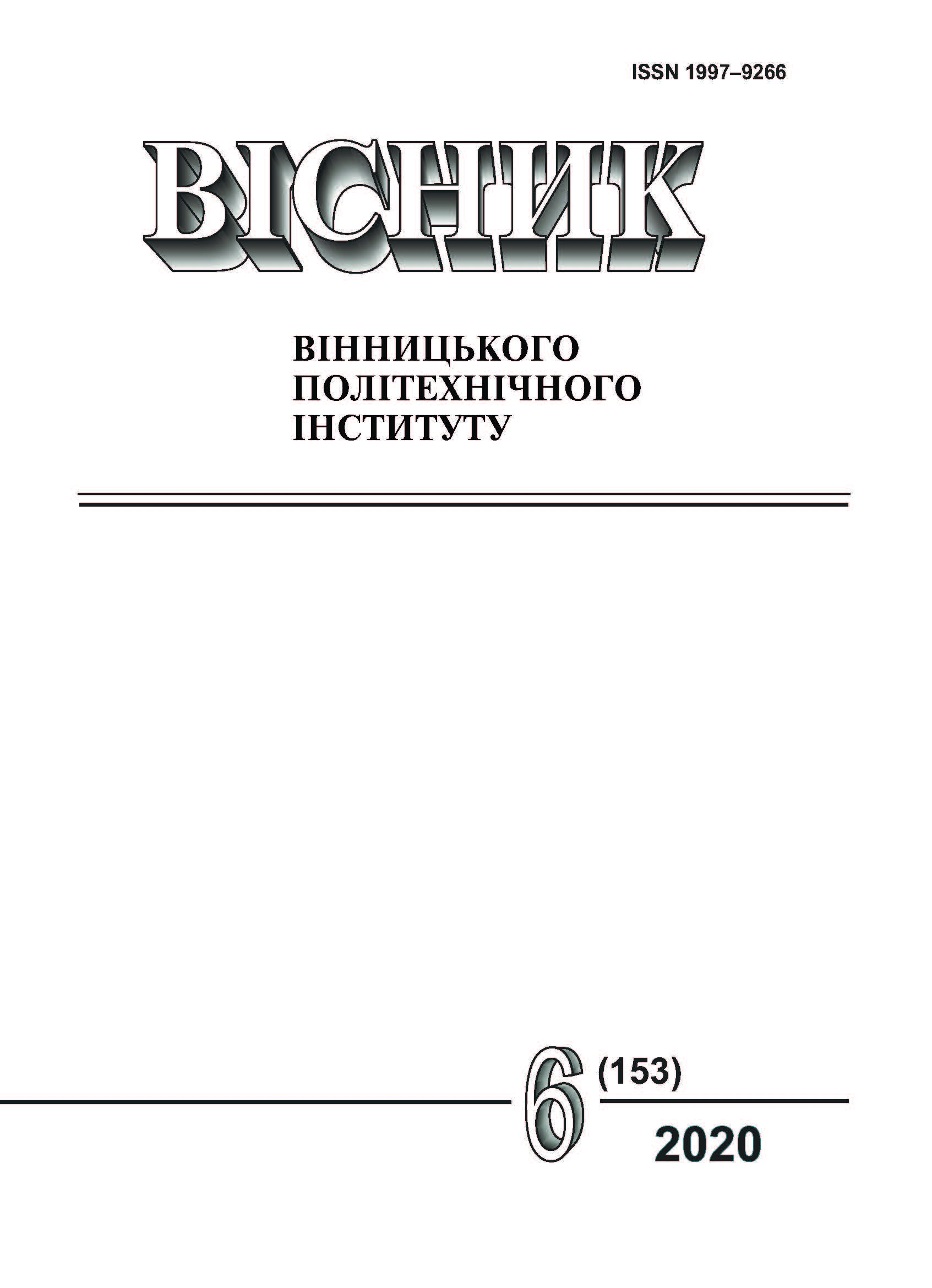On the Issue of Topological Observability of Cognitive Maps while Maintaining Their Stability
DOI:
https://doi.org/10.31649/1997-9266-2020-153-6-84-92Keywords:
cognitive modeling, cognitive map, topological observability, stability, eigenvalue of a matrix, complex system, control, institution of higher educationAbstract
The article considers the issue of optimizing the cognitive map of a complex system in compliance with the requirements for its full topological observability and stability, which allows cognitive modeling and analysis of the interaction of all vertices-variables and, in case of confirmation of complete controllability, -which of these variables. The information technology of analysis and optimization of topological observability of multiconnected geographic information systems created earlier by the authors is characterized. According to the system of rules it transforms the information or mathematical model of the system into the formalization of the system model in the form of a dichromatic graph with vertices-variables and vertices-dependences rule of topological observability analysis. It is suggested how any cognitive map can be transformed into such a dichromatic graph, which allows to extend the previous developments for this type of system models, i.e. to analyze and optimize the level of topological observability of information systems models in the form of a cognitive map.
Special attention is paid to the stability of cognitive maps. A new method for the synthesis of fully topologically observable stable cognitive maps of the nth order of a certain type on the basis of a basic fully topologically observable stable cognitive map of a smaller order, constructed by experts, is proposed. The paper demonstrates the work of the method based on the basic second-order cognitive map. The basic cognitive map is transformed into a stable higher-order cognitive model by adding one new vertex incident to one of the vertices of this basic cognitive map. Structurally, the adjacency matrix of the cognitive map includes a contiguity matrix of the lower order cognitive map, to which is added another row and a column with one non-zero element and zeros in all other elements of this row. It is proved, using Vieta’s theorem and the rule of calculating the determinant of the matrix through algebraic additions that the cognitive maps of the nth order synthesized in this way will be both completely topologically observable and stable.
An example of application of the created method to the analysis and optimization of the cognitive map, which takes into account the main components of the educational and professional program of a higher education institution, is given. It is shown that only such an educational process will be fully topologically observable, stable, which will provide intermediate final certification, similar to "Step-1" or "Step-2" for medical specialties. Such process will be more managed in the case of proving complete controllability, it allow to synthesize the law of quality management of higher education. It is noted that the obtained conclusions can be extended to multi-module or multi-semester disciplines (intermediate colloquia, etc. are required) and practice (intermediate tests).
References
В. Б. Мокін, О. В. Бурдейна, К. О. Коваль, і А. Р. Ящолт, «Метод проектування когнітивної карти для оптимізації профорієнтаційної діяльності ЗВО,» Вісник Вінницького політехнічного інституту, № 3, с. 89-99, 2018. [Електронний ресурс]. Режим доступу: https://visnyk.vntu.edu.ua/index.php/visnyk/article/view/2238?articlesBySameAuthorPage=2 .
В. Д. Романенко, и Ю. Л. Милявский, «Синтез следящей системы управления неустойчивыми импульсными процессами в иерархических когнитивных картах сложных систем,» Теоретичні та прикладні проблеми і методи системного аналізу, № 4, с. 7-13, 2016. [Електронний ресурс]. Режим доступу: http://dspace.nbuv.gov.ua/handle/123456789/150927 .
В. Д. Романенко, и Ю. Л. Милявский, «Обеспечение устойчивости импульсных процессов в когнитивных картах на основе моделей в пространстве состояний,» Теоретичні та прикладні проблеми і методи системного аналізу, № 1,
с. 26-42, 2014. Режим доступу: http://dspace.nbuv.gov.ua/bitstream/handle/123456789/85458/03-Romanenko.pdf?sequence=1
П. Эйкхофф, Основы идентификации систем управления. М.: Мир, 1975, 680 с.
В. Б. Мокін, І. В. Варчук, і Є. М. Крижановський, Інформаційна технологія аналізу та оптимізації топологічної спостережуваності багатозв’язних геоінформаційних систем, моногр. Вінниця, Україна: ВНТУ, 2019, 121 с. [Електронний ресурс]. Режим доступу: https://press.vntu.edu.ua/index.php/vntu/catalog/book/522 .
А. З. Гамм, и И. И. Голуб, Наблюдаемость электроэнергетических систем. М.: Наука, 1990, 200 с.
A. N. Montanari, and L. A. Aguirre, “Observability of Network Systems: A Critical Review of Recent Results,” J. Control Autom Electr Syst, no 31, 1348-1374, 2020. [Electronic resource]. Available: https://doi.org/10.1007/s40313-020-00633-5 .
H. Zhang, and K. Han, “A Hybrid Observability Analysis Method for Power System State Estimation,” IEEE, vol. 8,
pp. 73388-73397, 2020. [Electronic resource]. Available:
https://doi.org/10.1109/ACCESS.2020.2987358 .
В. В. Булдигін, І. В. Алєксєєва, В. О. Гайдей, О. О. Диховичний, Н. Р. Коновалова, і Л. Б. Федорова, Лінійна алгебра та аналітична геометрія, навч. посіб., В. В. Булдигіна, ред. Київ, Україна: ТВіМС, 2011, 224 с. [Електронний ресурс]. Режим доступу: http://matan.kpi.ua/public/files/Posibnyk%20LA+AG.pdf .
Наказ МОН України від 12.12.2018 №1380, Про затвердження стандарту вищої освіти за спеціальністю 126 «Інформаційні системи і технології» для першого (бакалаврського) рівня вищої освіти. [Електронний ресурс]. Режим доступу: https://mon.gov.ua/storage/app/media/vishcha-osvita/zatverdzeni%20standarty/12/21/126-informatsiyni-sistemi-ta-tekhnologii-bakalavr.pdf .
Downloads
-
PDF (Українська)
Downloads: 112
Published
How to Cite
Issue
Section
License

This work is licensed under a Creative Commons Attribution 4.0 International License.
Authors who publish with this journal agree to the following terms:
- Authors retain copyright and grant the journal right of first publication.
- Authors are able to enter into separate, additional contractual arrangements for the non-exclusive distribution of the journal's published version of the work (e.g., post it to an institutional repository or publish it in a book), with an acknowledgment of its initial publication in this journal.
- Authors are permitted and encouraged to post their work online (e.g., in institutional repositories or on their website) prior to and during the submission process, as it can lead to productive exchanges, as well as earlier and greater citation of published work (See The Effect of Open Access).





